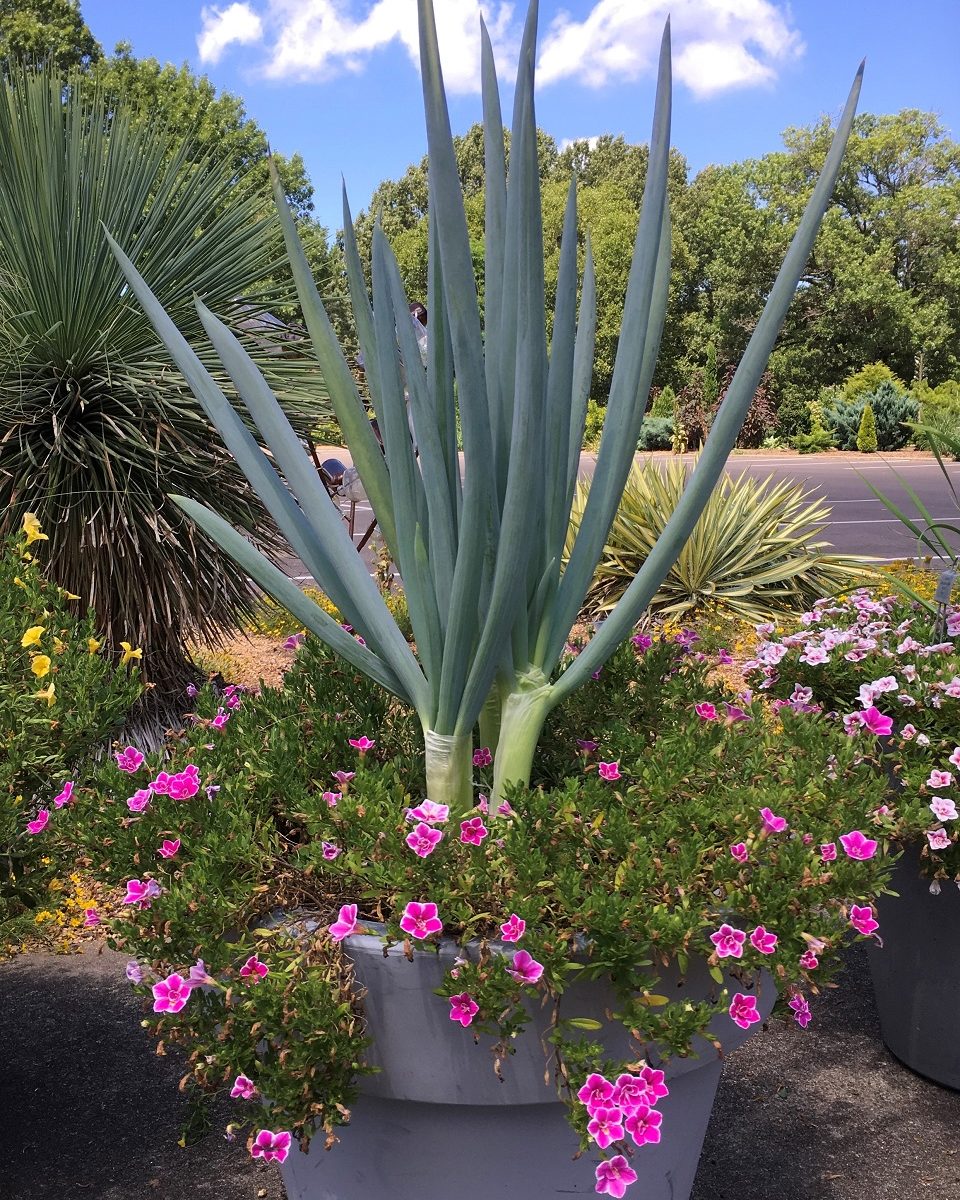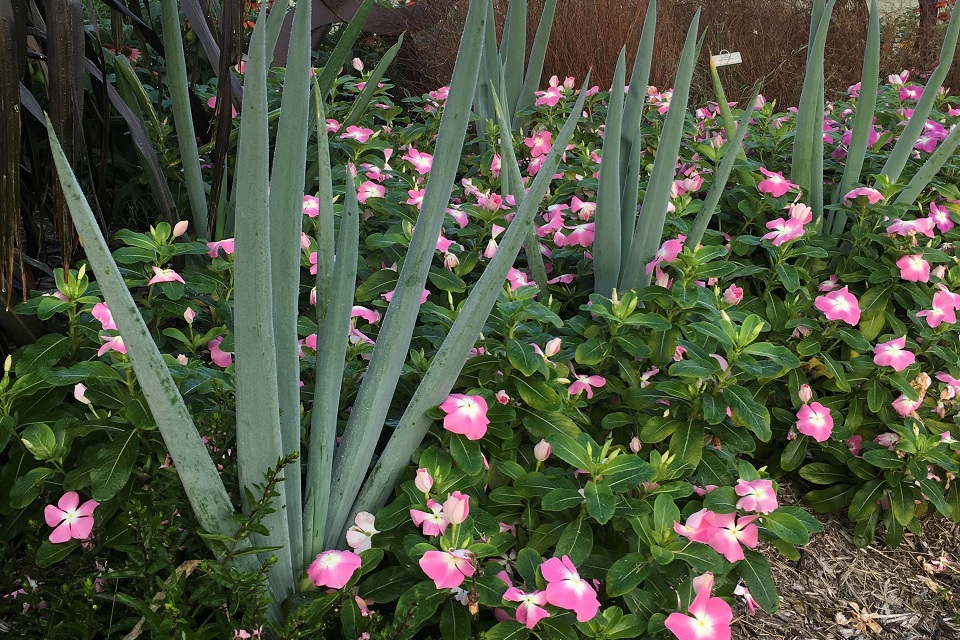
Submitted by Jason
Reeves, research horticulturist, University of Tennessee Gardens, Jackson
The
‘Warrior’ onion is not just a plant for the dinner table.
A 2016 All American Selection winner, ‘Warrior’ onion has become one of my favorite plants for its beautiful blue spiky foliage that stands out all season long.
Commonly referred to as a green, spring, or bunching onion, ‘Warrior’ is good for eating but great when used an ornamental. This selection is easy to grow from seed or plants. Sow seed indoors in March or outdoors in mid to late April. Seed can be direct sown in the garden, but for best results, start them in good quality potting soil in trays or pots. Transplant them into the garden 3 to 6 inches apart once they are 3 to 6 inches tall. For eating purposes, they will mature as early as 60 days and are good raw as scallions or cooked and perfect for grilling whole. They also stay tender longer than most other spring onions.

Leave them alone and they become onions of great beauty. The spiky blue leaves will grow to the size of your thumb, reaching 16 to 22 inches tall, and remain attractive into the winter. Unlike most blue foliaged plants, Warrior onions remain glaucous blue all year. They look great poking thorough lower growing flowers like vinca, angelonia, and compact forms of cosmos in garden beds. They also make excellent “thriller” elements in a pot.
As with other onions, Warrior onions perform best in full sun in average to dry soil. In a normal to mild winter, they will overwinter and produce 2- to 3-inch heads of small white flowers, attracting pollinators in the spring.
In addition to the specimens in the UT Gardens, Jackson, you can find Warrior onions near the Friendship Plaza at the UT Gardens, Knoxville, and in their kitchen garden.
The UT Gardens includes plant collections located in Knoxville, Crossville and Jackson. Designated as the official botanical garden for the State of Tennessee, the collections are part of the UT Institute of Agriculture. The Gardens’ mission is to foster appreciation, education and stewardship of plants through garden displays, educational programs and research trials. The Gardens are open during all seasons and free to the public. For more information, see the Gardens website.